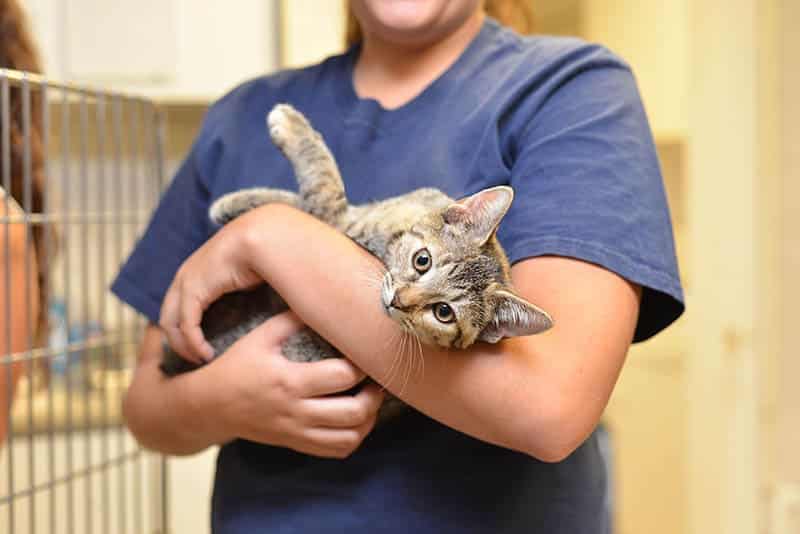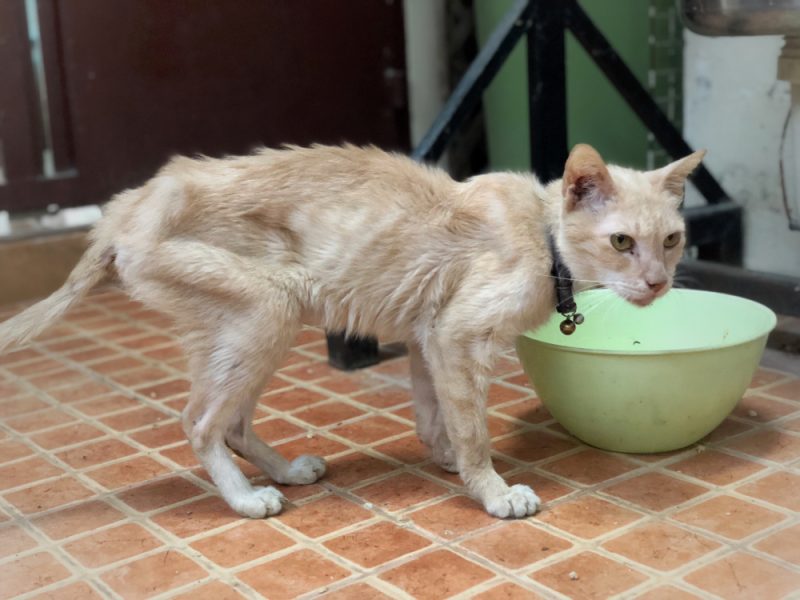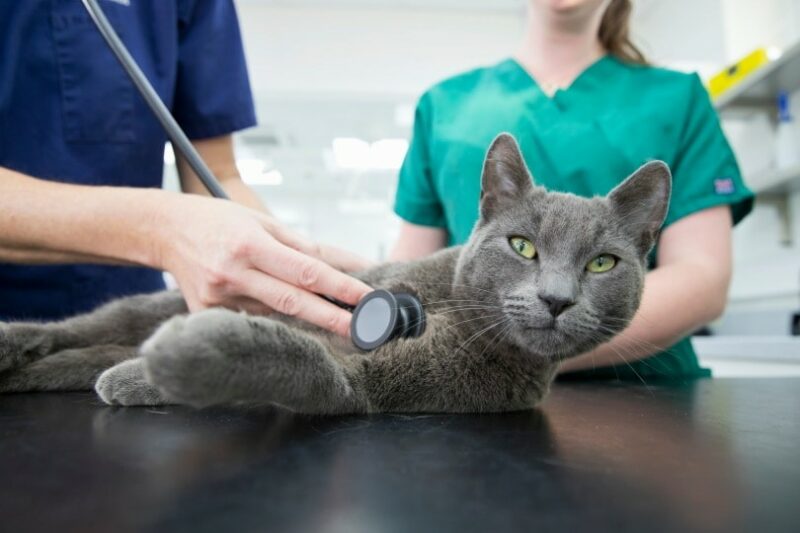Providing a loving, calm, and caring home to a cat in need is an incredibly rewarding experience, both for you and your little protégé. It’s also a great way to promote a smooth transition for the cat until they find a forever home. So, if you’re thinking about fostering one or more feline companions but are unsure where to start, you’ve come to the right place.

Before You Start: Why Should You Foster a Cat?
There are many reasons that fostering a cat can be a memorable, gratifying, and overall wonderful experience. By temporarily welcoming an animal in need into your home, you can:
- Free up a place at the shelter to accommodate another cat.
- Give your foster cat the time that they need to be ready for adoption.
- Get the cat used to being around other pets and people.
- Help build the confidence of a cat that was abandoned or never had the chance to thrive in a loving home.
Of course, your experience may turn out differently. But even if you encounter a few pitfalls, keep in mind that your help is invaluable in changing the course of one of the cats’ lives.
Here are the steps to ensure a successful experience!

The 10 Steps to Foster a Cat
1. Choose a Local and Reputable Animal Rescue Organization
Your first step is to research an animal rescue organization in your area. Make a list of your favorites, and contact each one to find out if they need foster homes for cats. Websites like PetFinder can also help you find an animal welfare organization in your area.

2. Make Sure You Meet All the Requirements
Before you consider fostering a cat, you should ensure you meet all of the organization’s requirements. Most rescues have the following prerequisites:
- Are 18 years or older
- Can commit to fostering the cat for the required time (ranging from a few weeks to a few months)
- Capable of providing all the necessary care for the well-being of the cat
- Can maintain the necessary checkups and follow-ups with the veterinarian
- Ensure that pets you already have at home have their vaccinations up to date.
- Live within a reasonable distance of the organization.
- Have access to a means of transport.
Other criteria may be added in special cases, such as not owning a pet if the cat to be fostered is sick, contagious, or pregnant.
3. Fill Out an Application
Once you have found an organization you would like to work with, you must complete an application to become a foster parent. It will typically require information about your living situation, experience with animals, and availability. Most organizations have an online form that is quick and easy to fill out. There may be a small fee to cover the costs of processing the application forms.

4. Prepare for an Interview
You may be asked to attend a telephone, virtual, or in-person interview. It’s a good opportunity to ask all the questions that come to mind.
5. Attend a Training Session
Many organizations require foster parents to attend a short training session. This online or in-person session can cover topics like organization policies, the differences between adopting a healthy cat versus a cat needing special care, how to care for un-weaned kittens, what to do in an emergency, and how to introduce a new pet into your home.

6. Prepare Your Home
Do not underestimate this crucial step! The smooth integration of your foster cat into their new environment is essential for their well-being. Your new feline companion will need time to get used to the sounds and smells of your home. Moreover, follow the organization’s instructions regarding the specific needs of the cat you will foster.
7. Bring Home Your Foster Cat

Once you have been approved to become a foster family, you will be matched with a cat based on the criteria you chose during your application and the organization’s rules. They will often have more than one available, and a member of the organization will explain the characteristics of each cat and their specific needs. You will then be asked to pick up your foster cat. Ensure you have everything you need, including a carrier, food, and litter.
- When you bring your cat home, introduce them to their new room first. Give them time to explore and get used to their new surroundings before introducing them to other pets or family members.
- Put their food, litter box, and bed in separate areas of the room, and show them where you have placed them.
- Leave the carrier in the room instead of storing it. It will be a safe place for them to seek refuge. You can add a blanket with their scent and a few toys.
- Make sure your foster cat has access, at all times, to a quiet place in the house where they can safely retreat.
- Monitor the cat’s health and behavior. If you notice anything unusual, contact the animal rescue organization right away.
8. Comply With Organizational Guidelines
The animal rescue organization will give you advice and instructions for caring for your foster cat, including feeding, socialization, and veterinary care. Remember that while the cat is in your care, the organization is still technically the animal’s owner. That is why the important decisions (for example, the choice of the final adoptive home) belong to them.
9. Help the Cat Find a Forever Home
The ultimate goal of fostering a cat is to help them find the perfect forever home. You can stay in contact with the animal rescue association so your little protégé has the chance to find the place that suits them best.

10. Give Them Plenty of Love and Attention!
Foster pets need all the love and attention that you can give them. Most have been abandoned or have experienced trauma and abuse that can take time to heal. How you build trust with them will tremendously impact their healing and how they behave in their future forever home. That’s what makes fostering such a precious and unique experience!

Frequently Asked Questions
Does the Animal Rescue Organization Cover Foster Care Costs?
Most animal rescue organizations (like the SPCA or the Animal Humane Society) will cover food, accessories, medication, carriers, toys, and any training required.
Can You Choose Which Foster Cat to Bring Home?
It depends on each organization’s policies, but most will place animals in homes on a first-come, first-served basis. In any case, rest assured that you will never be matched with a cat that does not suit your living situation.
Can You Adopt Your Foster Cat?
Usually yes! The foster family can adopt most foster animals once the animal is cleared for adoption by the organization. However, be sure to ask the rescue if there are any exceptions so you don’t end up heartbroken!

Conclusion
Fostering is an exceptionally rewarding experience that has a crucial impact on the lives of animals. Now that you know the steps to welcome your first adoptive cat, contact a local rescue today if you feel ready! Many little felines depend on your act of kindness for a chance to find their forever home.
Featured Image Credit: Africa Studio, Shutterstock

















